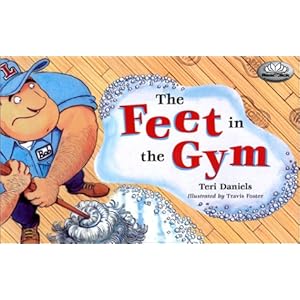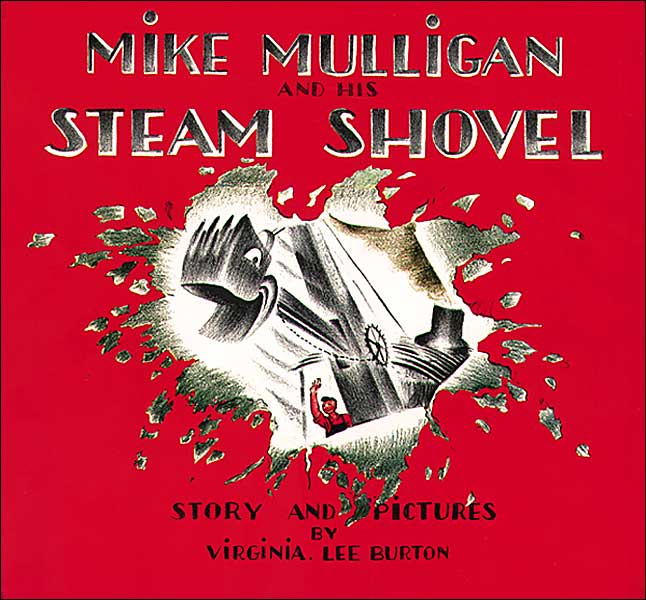
Written by Teri Daniels
Illustrated by Travis Foster
(Winslow Press, 1999)
When I went to elementary school, I feared the janitor. He yelled. He spoke openly and bitterly about how kids made his life messier. At recess, he’d hover around the boys’ washroom, give us the evil eye and tell us we’d better not leave spills of any kind. I learned to hold it all day. With his red hair and beard and his thick eyebrows at a permanent slant to convey anger, the janitor reminded of the lurking troll our librarian introduced me to in a picture book.
Imagine my surprise when I began teaching and noticed happy, bouncy groups of children flocking around the custodian as if he were the pied piper. I’ve been to many schools and, thankfully, the friendly, kid-focused custodian appears to be the norm.
The Feet in the Gym is an amusing rhyming picture book about an affable, conscientious custodian named Bob whose most challenging task is keeping the gym floor clean. With pride, he mops down the gym until the floor sparkles. Unfortunately, as anyone who works in a school knows, floors take a beating during the school day. The students and teachers of Lakeside School swarm the gym in waves, leaving behind flotsam from painting projects, crumbly cookie sales and muddy/grassy excursions to the school field. Whether it’s the small-footed kindergarteners or the clomping treads of the marching band, each group tarnishes the shine. Bob attempts damage control, but the stream of children is relentless. Thankfully, for Bob, there is a happy (temporary) ending, punctuated with a final amusing illustration by the talented Travis Foster.
Foster’s art reminds me of the animation in the movie The Incredibles. His shoeprints appear three-dimensional in many places, causing me to run my finger across the page, only to be surprised that the images are, in fact, flat.
This is a wonderful picture book for teachers to include in a theme about school community or the larger community. Too often, custodians are taken for granted and/or undervalued. For many children, however, the custodian may be the person in the school they connect with the most over the years. Parents and teachers can use this book as a discussion starter in building an appreciation for this vital worker in school buildings. Perhaps after a reading, children and adults may pause to wipe their feet on the mats set out at many school entrances. Custodians deserve a break.
Illustrated by Travis Foster
(Winslow Press, 1999)
When I went to elementary school, I feared the janitor. He yelled. He spoke openly and bitterly about how kids made his life messier. At recess, he’d hover around the boys’ washroom, give us the evil eye and tell us we’d better not leave spills of any kind. I learned to hold it all day. With his red hair and beard and his thick eyebrows at a permanent slant to convey anger, the janitor reminded of the lurking troll our librarian introduced me to in a picture book.
Imagine my surprise when I began teaching and noticed happy, bouncy groups of children flocking around the custodian as if he were the pied piper. I’ve been to many schools and, thankfully, the friendly, kid-focused custodian appears to be the norm.
The Feet in the Gym is an amusing rhyming picture book about an affable, conscientious custodian named Bob whose most challenging task is keeping the gym floor clean. With pride, he mops down the gym until the floor sparkles. Unfortunately, as anyone who works in a school knows, floors take a beating during the school day. The students and teachers of Lakeside School swarm the gym in waves, leaving behind flotsam from painting projects, crumbly cookie sales and muddy/grassy excursions to the school field. Whether it’s the small-footed kindergarteners or the clomping treads of the marching band, each group tarnishes the shine. Bob attempts damage control, but the stream of children is relentless. Thankfully, for Bob, there is a happy (temporary) ending, punctuated with a final amusing illustration by the talented Travis Foster.
Foster’s art reminds me of the animation in the movie The Incredibles. His shoeprints appear three-dimensional in many places, causing me to run my finger across the page, only to be surprised that the images are, in fact, flat.
This is a wonderful picture book for teachers to include in a theme about school community or the larger community. Too often, custodians are taken for granted and/or undervalued. For many children, however, the custodian may be the person in the school they connect with the most over the years. Parents and teachers can use this book as a discussion starter in building an appreciation for this vital worker in school buildings. Perhaps after a reading, children and adults may pause to wipe their feet on the mats set out at many school entrances. Custodians deserve a break.











